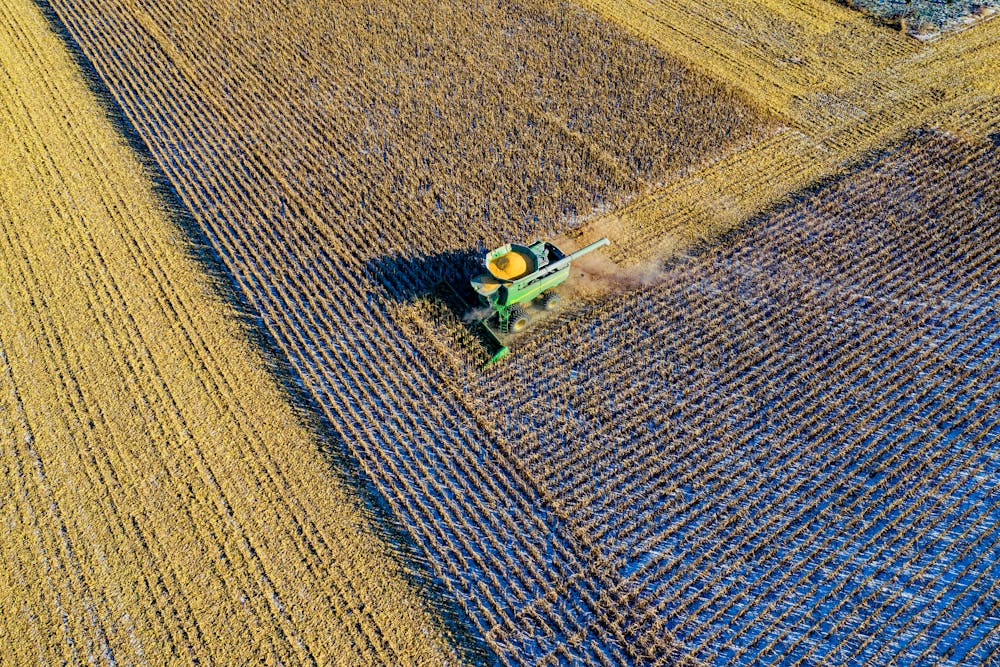In recent decades, as concerns about environmental sustainability and climate change have intensified, a shift in agricultural paradigms has emerged prominently. Regenerative Agriculture represents a holistic approach, focusing not only on producing food but also on revitalizing the earth it grows from. This method of farming goes beyond sustainability, aiming to rejuvenate soil health, increase biodiversity, and counteract the effects of climate change through enhanced carbon sequestration. As the practice gains traction globally, it promises a transformative impact on both ecosystems and the agricultural community.
Understanding the Basics of Regenerative Agriculture
Regenerative Agriculture is a farming approach that revolves around the principles of enhancing soil vitality, increasing biodiversity, and improving the ecosystem services of agricultural land. At its core, Regenerative Agriculture seeks to repair the damage done by decades of intensive farming, which has often prioritized short-term yields over long-term soil health.
The philosophy behind Regenerative Agriculture is grounded in the belief that a healthy soil ecosystem is fundamental to sustainable food production. This approach employs a variety of practices designed to improve soil structure, enhance water retention, and increase microbial activity. Key practices include:
- No-till farming: This technique minimizes soil disturbance, which helps preserve soil microorganisms and organic matter.
- Cover cropping: Planting cover crops like legumes and grasses between regular crop cycles to prevent soil erosion and improve soil fertility.
- Crop diversification: Growing a variety of crops to enhance biodiversity, which in turn helps break pest and disease cycles.
- Rotational grazing: Allowing livestock to graze in a way that mimics natural grazing patterns, improving soil health and plant growth.
By adhering to these practices, farmers can not only restore soil health but also enhance the resilience of their crops to climate variability and extreme weather events. The integration of these methods turns agriculture from being part of the problem to a critical part of the solution to environmental degradation.
The Environmental Impact of Regenerative Agriculture
The environmental benefits of Regenerative Agriculture are vast and multifaceted. By focusing on restoring soil health and ecosystem balance, this approach offers a potent means of mitigating climate change, chiefly through the sequestration of atmospheric CO2 in soil organic matter. Studies have shown that healthier, carbon-rich soils have the ability to absorb more carbon from the atmosphere, effectively turning agricultural lands into valuable carbon sinks.
In addition to carbon sequestration, Regenerative Agriculture significantly reduces the runoff of nutrients and pesticides into nearby water bodies. The practices employed, such as cover cropping and reduced tillage, help keep the soil in place, preventing erosion and water pollution. This not only preserves water quality but also enhances groundwater recharge.
Furthermore, the biodiversity fostered by Regenerative Agriculture plays a crucial role in sustaining various forms of life. By promoting a wide array of plant species and integrating wildlife habitats into farm landscapes, regenerative farms support higher levels of wildlife biodiversity, which contributes to healthier and more resilient ecosystems.
Overall, the impact of Regenerative Agriculture extends beyond the farm itself—it contributes to a broader ecological balance, making it a critical strategy in the fight against climate change and environmental degradation. As this approach continues to spread, it could play a vital role in shaping a sustainable future for both agriculture and the global community.
Techniques and Practices in Regenerative Agriculture
The implementation of Regenerative Agriculture is distinguished by a series of specific techniques and practices that aim to restore soil health and promote a balanced ecosystem. These methods are diverse and can be adapted to various agricultural settings, ranging from small family farms to large commercial operations. Here is a detailed look at some of the key techniques:
- Permaculture: This design philosophy incorporates the layout and management of agriculturally productive ecosystems that have the diversity, stability, and resilience of natural ecosystems. It often includes agroforestry, the integration of trees and shrubs into farm landscapes, which benefits both the soil and the farm’s microclimate.
- Agroforestry Systems: These systems combine crops with tree farming, which can lead to enhanced soil structure and fertility, increased biodiversity, and improved water cycle management. Common agroforestry practices include silvopasture (integrating trees, forage, and the grazing of domesticated animals) and alley cropping (planting crops between rows of trees to enhance productivity and biodiversity).
- Biochar: The use of biochar, a stable form of carbon produced from biomass, helps in enhancing soil fertility and locking carbon into the soil, thus mitigating the greenhouse effect by reducing the concentration of CO2 in the atmosphere.
- Holistic Management: This approach involves managing farms as wholes rather than as collections of individual elements. It emphasizes the complex interactions between plants, animals, soils, and water, aiming to mimic nature to enhance the sustainability and productivity of the land.
Each of these practices not only supports the principle of Regenerative Agriculture but also contributes significantly to the overarching goals of enhancing soil health, increasing farm productivity, and restoring ecological balance.
Future Prospects and Challenges for Regenerative Agriculture
The future of Regenerative Agriculture holds promising potential but also faces several significant challenges. As the global community becomes increasingly aware of the environmental and social benefits of regenerative practices, the adoption rate is expected to rise. This growth is driven by the need for sustainable food production systems that enhance food security while addressing climate change.
Challenges:
- Economic Barriers: Transitioning to Regenerative Agriculture can be costly in the short term. Farmers often face significant initial expenses for new equipment and a temporary decrease in yields during the transition period.
- Educational Gaps: There is a substantial need for educational programs to teach farmers about Regenerative Agriculture techniques and benefits. Without proper knowledge and training, adoption can be slow.
- Policy and Incentives: Effective policies and incentives are crucial to encourage farmers to adopt regenerative practices. This includes subsidies, carbon credits, and research funding.
Prospects:
- Increased Adoption: With continuous education and supportive policies, more farmers worldwide are expected to adopt regenerative practices.
- Technological Advancements: Innovations in farming technology, such as precision agriculture, can integrate seamlessly with regenerative practices, enhancing their efficiency and effectiveness.
- Market Demand: Consumer awareness and demand for sustainably produced food are on the rise. This trend is encouraging more farmers to adopt regenerative practices, which can lead to premium prices for their products.
In conclusion, while Regenerative Agriculture presents a pathway towards a sustainable agricultural system that benefits the soil, climate, and biodiversity, it requires concerted efforts from multiple stakeholders, including governments, the agricultural industry, and consumers, to overcome challenges and realize its full potential.
Source: https://ogrodprzydomu.pl/rolnictwo-regeneracyjne-czym-jest-na-czym-polega-i-jakie-ma-znaczenie/









